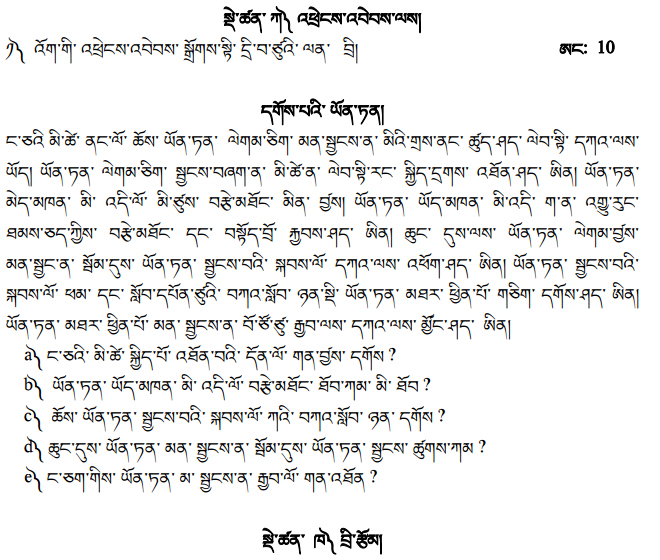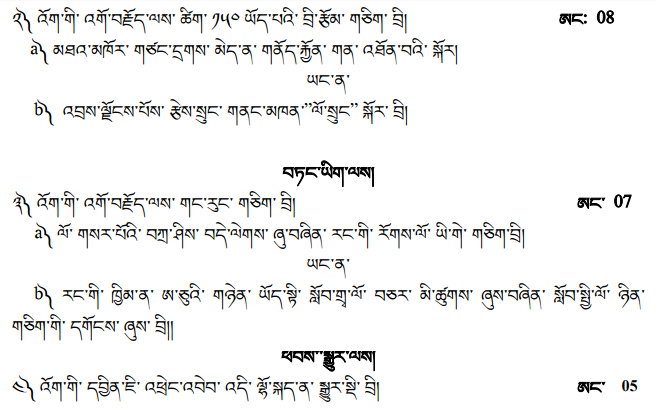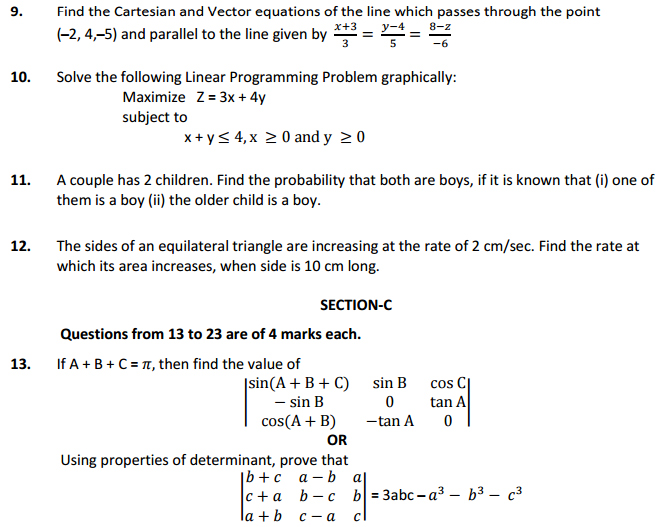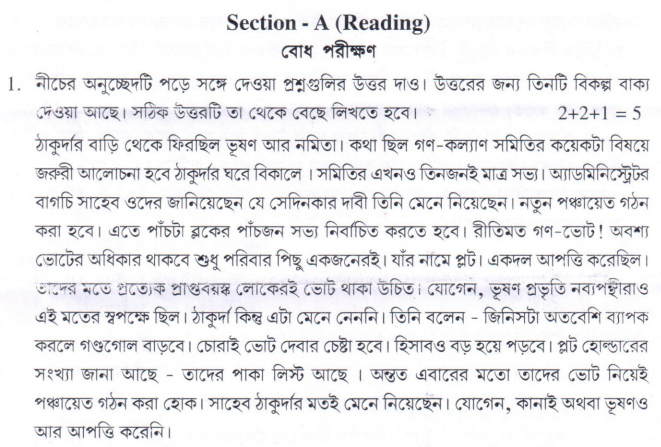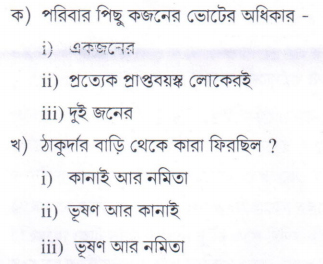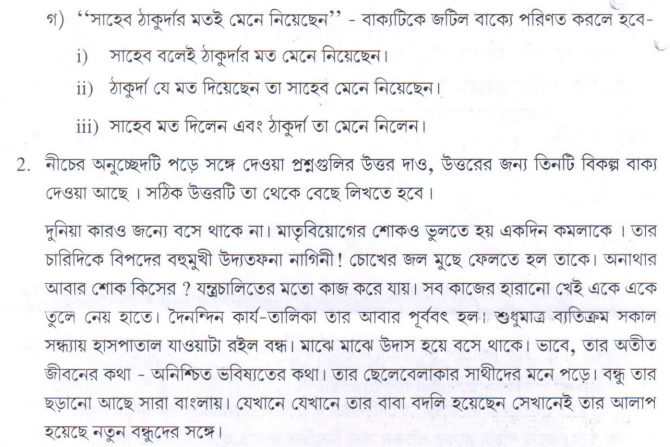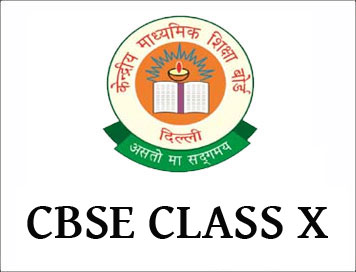
(Download) CBSE Class-10 2016-17 Sample Paper (Bahasa Melayu)
Bahasa Melayu
Markah : 90
Masa : 3 jam
JANGAN BUKA KERTAS SOALAN SEHINGGA DIBERITAHU
1. Kertas soalan ini mengandungi empat bahagian, iaitu Bahagian A, Bahagian B, Bahagian C, dan Bahagian D.
2. Bahagian A terdiri daripada Soalan 1 yang mengandungi empat bahagian, iaitu (i), (ii), (iii), dan (iv). Anda diwajibkan menjawab ke semua bahagian tersebut.
3. Bahagian B terdiri daripada Soalan 2 yang mengandungi tiga bahagian, iaitu (i), (ii), dan (iii). Anda diwajibkan menjawab ke semua bahagian tersebut.
4. Bahagian C terdiri daripada Soalan 3, Soalan 4, dan Soalan 5 yang mengandungi 25 soalan tatabahasa berbentuk objektif. Jawab semua soalan.
5. Bahagian D terdiri daripada Soalan 6 dan Soalan 7 yang mengandungi dua soalan KOMSAS berbentuk objektif dan Soalan 8 dan Soalan 9 mengandungi dua soalan KOMSAS berbentuk subjektif. Anda dikehendaki menjawab semua soalan.
6. Anda dinasihatkan supaya mengambil masa untuk menjawab soalan Bahagian A (50 minit), Bahagian B (40 minit), Bahagian C (40 minit), dan Bahagian D (30 minit).
7. Anda dikehendaki menulis jawapan dalam kertas jawapan yang telah disediakan.
8. Anda diberi masa 15 minit untuk membaca kertas soalan. Anda tidak dibenarkan menulis atau membuat sebarang catatan dalam tempoh tersebut.
9. Kertas soalan ini mengandungi 16 muka surat sahaja.
Bahagian A
[20 Markah]
SOALAN 1
(i) Baca rencana di bawah dengan teliti, kemudian jawab soalan-soalan yang berikutnya.
Malaysia mempunyai 14 buah negeri. Sembilan buah negeri telah mengamalkan sistem pemerintahan beraja, manakala lima buah negeri lagi tidak mengamalkan sistem pemerintahan beraja. Almarhum Tuanku Syed Putra Jamalullail merupakan Raja Melayu yang paling lama memerintah. Baginda dilahirkan pada 25 November 1920 dan merupakan Raja Perlis yang kelima. Pada 4 Disember 1945, baginda telah ditabalkan menjadi Raja Perlis dan sekali gus menjadi pemerintah negeri tersebut. Selama 55 tahun negeri Perlis berada di bawah pemerintahan beliau. Pada tahun 1955, baginda telah menyambut Jubli emas pemerintahannya dan dipercayai bahawa baginda merupakan raja yang paling lama memerintah sesebuah negeri di dunia.
Baginda mendapat pendidikan awal di Sekolah Menengah Arau, Perlis dan telah melanjutkan pelajaran di Penang Free School, Pulau Pinang. Pada tahun 1940, baginda telah dilantik menjadi Majistret di Kangar dan pada tahun 1941 baginda telah ditukarkan ke Kuala Lumpur. Selepas Perang Dunia Kedua tamat, baginda telah ditabalkan sebagai Raja Perlis bagi menggantikan ayahandanya yang telah mangkat.
Baginda sangat mengambil berat akan pendidikan anak-anak negeri Perlis. Banyak sumbangan yang telah disalurkan oleh baginda dalam melihat kemajuan dalam bidang pendidikan. Oleh itu, baginda telah mengambil inisiatif dengan menubuhkan "Tabung Derma Pelajaran Negeri Perlis" sehingga tertubuhnya Sekolah Inggeris Derma. Sekolah ini merupakan sekolah Inggeris yang pertama di negeri Perlis.
Pada tahun 1960, baginda telah dipilih oleh Majlis Raja-raja Melayu sebagai Yang di-Pertua Agong Ketiga. Apabila Persekutuan Tanah Melayu berubah menjadi Persekutuan Malaysia pada 16 September 1963, baginda dan permaisurinya, Tuanku Budriah menjadi yang di-Pertua Agong serta Raja Permaisuri Agong Malaysia yang pertama.
1. Siapakah Almarhum Tuanku Syed Putra Jamalullail?
A. Raja negeri Perlis.
B. Raja negeri Perak.
C. Raja negeri Sabah.
D. Raja negeri Sarawak.
2. Almarhum Tuanku Syed Putra Jamalullail telah dilahirkan pada …
A. 16 September 1963.
B. 4 Disember 1945.
C. 25 November 1920.
D. 15 Julai 1940.
3. Di manakah Almarhum Tuanku Syed Putra Jamalullail mendapat pendidikan awal?
A. Sekolah Inggeris Derma.
B. Sekolah rendah Arau, Perlis.
C. Penang Free School, Pulau Pinang.
D. Sekolah Menengah Arau, Perlis.
4. Perkataan mangkat bermaksud …
A. tidur
B. meninggal dunia
C. beradu
D. pergi
5. Almarhum Tuanku Syed Putra Jamalullail pernah dilantik sebagai?
A. Jurucakap.
B. Majistret.
C. Doktor.
D. Penderma.
(ii) Baca laporan di bawah ini dengan teliti. Kemudian, jawab soalan-soalan yang berikutnya.
KEMPEN GIGI SIHAT DI SEKOLAH KEBANGSAAN KEPONG
Pada 24 dan 25 Julai 2014 yang lalu, Kempen Gigi Sihat telah diadakan di Sekolah Kebangsaan Kepong. Kempen ini telah dianjurkan oleh Persatuan Ibu Bapa dan Guru (PIBG) dengan kerjasama Pusat Kesihatan Daerah Kuala Terengganu. Kempen ini diadakan adalah bertujuan untuk mendidik murid-murid pentingnya menjaga kesihatan gigi. Hal ini kerana, sejak akhir-akhir ini didapati murid-murid sering mengalami kesakitan dan kerosakan pada gigi akibat daripada penjagaan yang tidak betul. Oleh itu, kempen ini adalah untuk mendedahkan kepada murid-murid berkaitan langkah-langkah penjagaan awal yang perlu diketahui oleh murid-murid agar memiliki gigi yang sihat dan cantik.
Bersempena dengan kempen tersebut, terdapat pelbagai acara sampingan yang telah dijalankan. Antara aktiviti yang disediakan termasuklah pemeriksaan dan rawatan gigi secara percuma, ceramah berkaitan dengan kesihatan gigi, pertunjukan cara menggosok gigi yang betul, serta pameran kesihatan gigi. Pusat Kesihatan juga telah menyediakan ubat gigi dan berus gigi secara percuma kepada murid-murid. Ceramah kesihatan gigi telah
disampaikan oleh Doktor Munirah Abdullah, manakala pertunjukan cara menggosok gigi dengan betul telah disampaikan oleh jururawat-jururawat terlatih.
Kempen ini banyak memberi manfaat dan faedah kepada orang ramai terutamanya ibu bapa dan murid-murid berkaitan dengan penjagaan gigi yang betul. Oleh itu, pihak penganjur bercadang untuk mengadakan kempen seperti ini sebagai acara tahunan agar semua pihak mendapat faedah daripada kempen tersebut.Disediakan oleh: 27 Julai 2014

